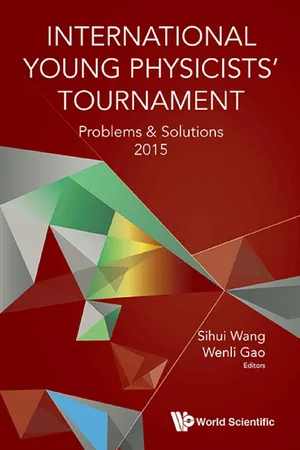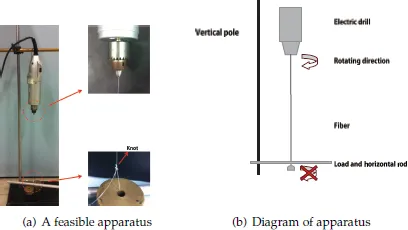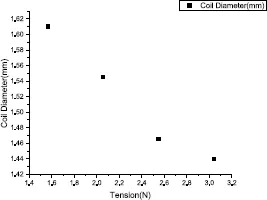
International Young Physicists' Tournament
Problems and Solutions 2015
- 180 pages
- English
- ePUB (mobile friendly)
- Available on iOS & Android
About This Book
-->
International Young Physicists' Tournament (IYPT), is one of the most prestigious international physics contests among high school students. This book is based on the solutions of 2015 IYPT problems. The authors are undergraduate students who participated the CUPT (Chinese Undergraduate Physics Tournament). It is intended as a college level solution to the challenging open-ended problems. It provides original, quantitative solutions in fulfilling seemingly impossible tasks. The young authors provide quantitative solutions to practical problems in everyday life.
This is a good reference book for undergraduates, advanced high school students, physics educators and curious public interested in the intriguing phenomenon in daily life.
-->
Request Inspection Copy
--> Contents:
- 2015 Problem 3: Artificial Muscles (Xin Yuan, Ruyang Sun, Wenli Gao, Huijun Zhou)
- 2015 Problem 4: Liquid Film Motor (Hailin Xu, Wenli Gao, Sihui Wang, Huijun Zhou)
- 2015 Problem 5: Two Balloons (Heyang Long, Luyan Yu, Ruyan Sun, Sihui Wang, Huijun Zhou)
- 2015 Problem 6: Magnus Glider (Boyuan Tao, Dachuan Lu, Yiran Deng, Sihui Wang, Huijun Zhou)
- 2015 Problem 9: Hovercraft (Ruyang Sun, Heyang Long, Wenli Gao, Sihui Wang)
- 2015 Problem 10: Singing Blades of Grass (Dachuan Lu, Yiran Deng, Boyuan Tao, Bingnan Liu, Wenli Gao)
- 2015 Problem 11: Cat's Whisker (Zengquan Yan, Hanqi Feng, Yuehui Li, Yu Zhang, Chunfeng Hou, Yuxiao Wang)
- 2015 Problem 13: Magnetic Pendulum (Chenghao Feng, Wenkai Fan, Dachuan Lu, Sihui Wang, Huijun Zhou, Wenli Gao)
- 2015 Problem 14: Circle of Light (Xiaodong Yu, Boyuan Tao, Xin Yuan, Sihui Wang, Wenli Gao)
- 2015 Problem 15: Moving Brush (Yiran Deng, Boyuan Tao, Bingnan Liu, Sihui Wang, Huijun Zhou)
- 2015 Problem 17: Coffee Cup (Dachuan Lu, Wenli Gao, Huijun Zhou)
-->
--> Readership: University students or students in gifted programmes interested in competing in Physics Olympiads. -->
Keywords:IYPT;Problem Solution;Physics Competition;CUPT;Open Ended ProblemsReview: Key Features:
- It is the only publication that documents the entire productivity movement in Singapore from 1981 to 2015
- The book covers the national productivity movement from three key perspectives: policy-makers, enterprises and employees, and the Singapore economy as a whole
Frequently asked questions
Information
Chapter 1
2015 Problem 3: Artificial Muscles
1.Introduction
2.Fabrication of Muscles
2.1.Preliminary Experiment
2.2.Manufacture



2.3.Analysis
Table of contents
- Cover
- Halftitle
- Title
- Copyright
- Dedication and Acknowledgement
- Contents
- 1. 2015 Problem 3: Artificial Muscles
- 2. 2015 Problem 4: Liquid Film Motor
- 3. 2015 Problem 5: Two Balloons
- 4. 2015 Problem 6: Magnus Glider
- 5. 2015 Problem 9: Hovercraft
- 6. 2015 Problem 10: Singing Blades of Grass
- 7. 2015 Problem 11: Cat’s Whisker
- 8. 2015 Problem 13: Magnetic Pendulum
- 9. 2015 Problem 14: Circle of Light
- 10. 2015 Problem 15: Moving Brush
- 11. 2015 Problem 17: Coffee Cup
- Author Index
- Subject Index